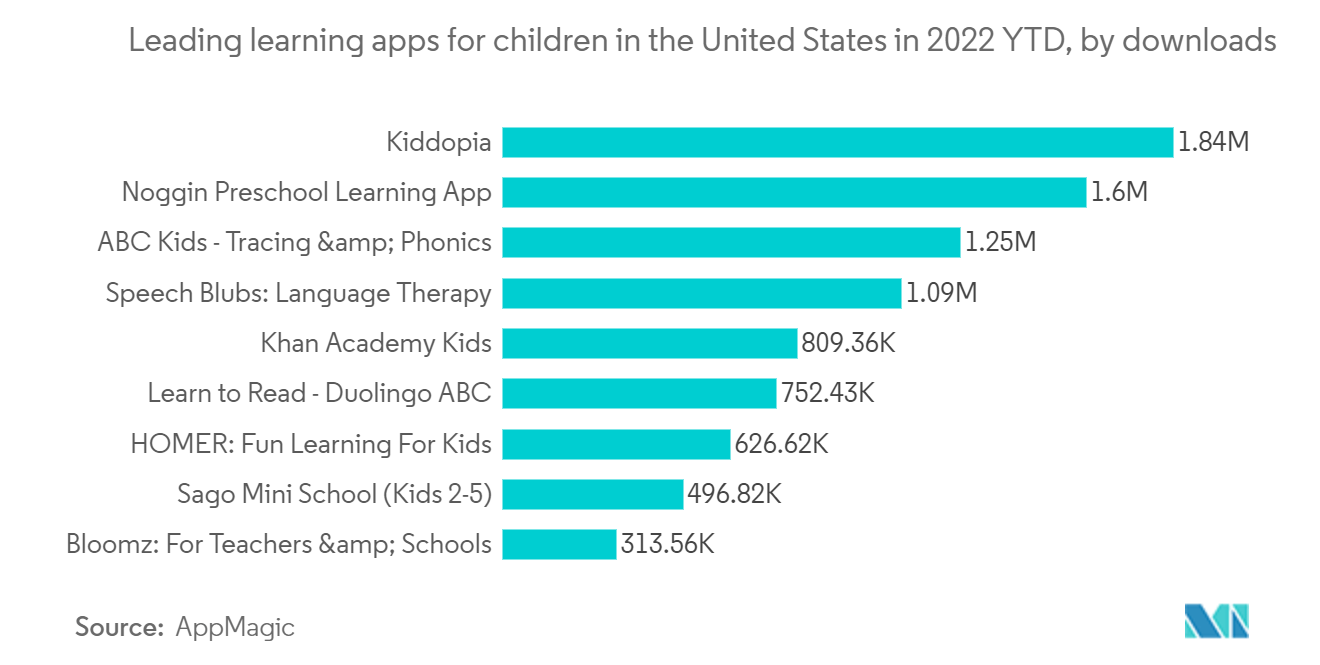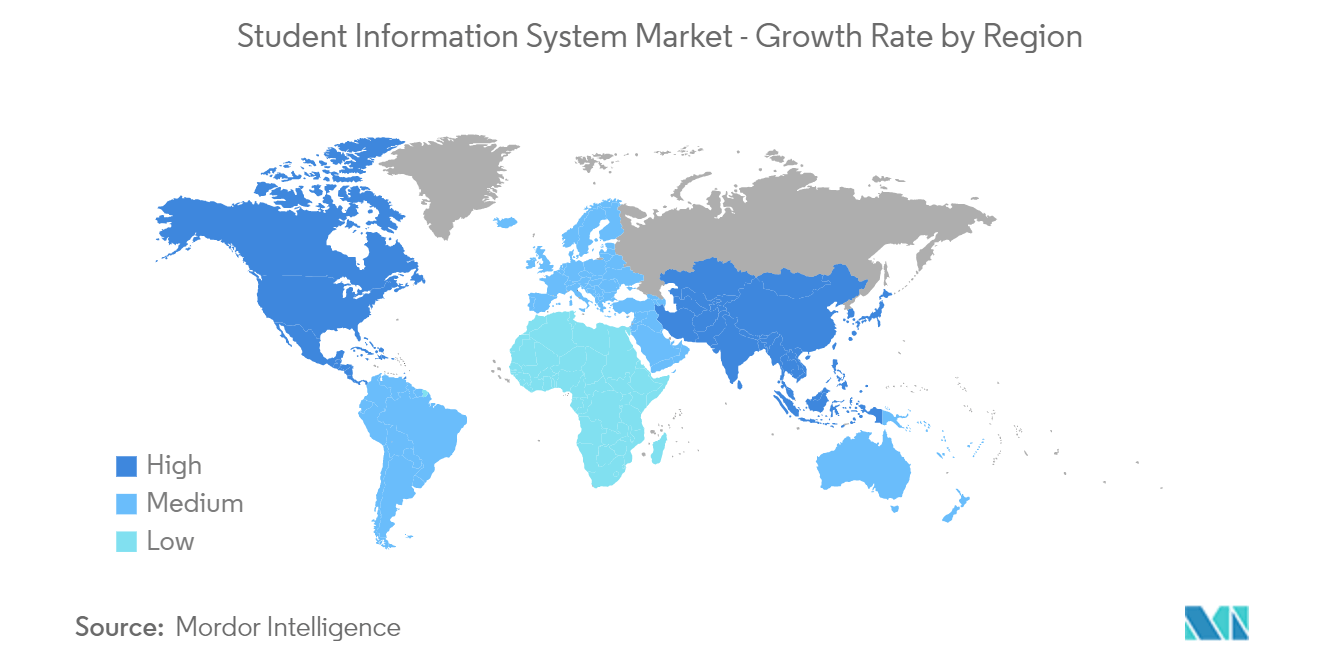Market Trends of Student Information System Industry
Adoption of Cloud in Student Information System is Projected to Drive the Market
- The need for institutions to provide access to data 24/7 and deliver a more personalized and seamless student experience is vital. Supported by cloud technologies, institutions can see a rapid return on investment and keep moving at pace in this increasingly competitive environment. Solutions usually include software packages such as student management systems, student information management systems, student records systems, and others. These require more data storage capabilities and thus provide growth opportunities for cloud-based student information systems.
- For instance, in July 2023, The Ministry of Education, Skills Development, and Entrepreneurship launched the ULLAS mobile app and signed 106 Memorandums of Understanding (MoUs) with various organizations and institutions. The Memorandums of Understanding include collaborations with both public and private entities to foster innovation, research, and knowledge exchange across multiple domains, ushering in a new era of education collaboration and industry-academia linkages.
- Moreover, during the pandemic, education institutes came to a total shutdown, and the demand for solutions such as student information systems has spiked rapidly. According to the figures released by UNESCO, 1.3 billion learners around the world were not able to attend schools during the pandemic. Many schools, colleges, and universities were closed across the globe.
- As the systems offer cloud deployment, which has higher storage and processing capabilities, the number of features embedded in the system can also increase, facilitating all the requirements demanded in the challenging times, right from enrolling the student to maintaining an alumni network base which otherwise would be a tedious and time-consuming task.

Asia Pacific to Witness Significant Growth
- A student information system with specific built-in mechanisms caters to the purpose of the school management system at the same time meeting the demands of student-related information management in developing countries such as China, India, Indonesia, and Malaysia, among others, majorly in K-12 Education. However, the growth highly depends upon the penetration of devices such as good computers and networking with decent internet connectivity and robust security.
- There are diverse sets of countries at different levels of income and development in Central Asia. The spread, use, and availability of student information systems are essential for the growth of the market, as is the availability of online learning materials, as well as devices and the level of internet connectivity at home.
- For instance, the school education system in India is the largest in the world, with over 1.5 million schools, over 8.7 million primary and secondary teachers, and more than 260 million enrolments. It is home to the largest and most complex education system in the world, catering to over 260 million young population each year, making it a region with immense opportunities for student information system vendors to penetrate and increase its customer base.
- Moreover, Governments of various countries in the region are taking initiatives to provide quality education and increase the literacy rate, which is expected to help the market grow in the longer run. For instance, the Chinese government is funding technology initiatives that are aimed at narrowing the gap between the quality of education in rural and urban areas. They have deployed a live-streaming network that connects hundreds of students spread across a vast expanse of China's countryside.


